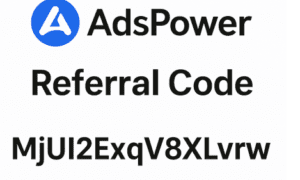If you’ve worked on public works projects before, you probably already know that you cannot simply rely on your payroll person to prepare your program curriculum and use a standard form that satisfies all local, state, and federal regulations.
From compliance with wage laws to managing training costs and adapting to changing industry needs, the prevailing wage apprenticeship program comes up with unique challenges. Learn about the key challenges and their helpful solutions.
What Are Prevailing Wage Apprenticeship Programs?
Wage apprenticeship programs generally focus on the long-term perspective of a regular job. The apprenticeship is a powerful way to gain experience and professional skills. A prevailing wage apprenticeship is a modern development that has been used in industries for decades as a mechanism for bringing talent, developing it, and keeping it. Apprenticeship programs are registered and certified by the Department of Labor.
Therefore, employers are mandated to abide by certain wage regulations as imposed through legislation or policy to ensure their apprentices receive at least the minimum wage for their occupation and the region in which they are based. The phrase “prevailing wage” is an average wage that’s paid to similarly employed workers in the region for a specific trade or occupation and is often determined by government wage surveys or other sources such as union agreements or collective bargaining.
Here are a few challenges that employers come across when implementing prevailing wage apprenticeship programs:
Getting Past the Compliance Obstacle
Violations (e.g., failure to pay the correct wage, improper documentation) have very significant effects, including prosecution, further fines and penalties, back pay, and other possible consequences (including disbarment). Usually, prevailing wage investigators and auditors decide whether to issue these based on the seriousness of the case and if they believe criminal intent is involved. The laws and rules pertaining to apprenticeship programs and prevailing salaries are subject to periodic changes. To maintain compliance, this calls for ongoing program monitoring and modification.
Solution:
Emphasize the value of foundational knowledge and the professional route that an apprenticeship can open. Establish a strategic alliance with professionals in the field, such as government agencies, trade unions, or educational institutions. Through this partnership, a strong learning framework will be established. To ensure the program’s continued success, regularly evaluate its effectiveness and make adjustments as needed.
Keep A Lookout For Funding and Budget
Prevailing wage apprenticeship training can be expensive and time-consuming, especially when dealing with different providers, formats, locations, and audiences. Employers can find apprenticeships expensive because they must pay a wage while offering intensive training that may involve specialized equipment, classroom instruction, and mentor time. All of this is accomplished while adjusting for an apprentice’s initial decreased productivity while they pick up new abilities, which may affect the workforce’s overall efficiency during the training phase.
Solution:
For your training needs, you can use or modify already existing, trustworthy, and pertinent specialists, platforms, tools, and content. To make sure your training programs are fulfilling your goals and producing the intended effects, you must regularly assess and enhance them. You must measure the results and influence of your training interventions, as well as gather and evaluate data and feedback from your sponsors, stakeholders, and learners.
Keeping Up With Skills and Industry Needs
Another key challenge is that apprenticeships often struggle to keep pace with the rapidly changing demands of the industry, leading to a mismatch between the skills being taught and the needs of the labor market. When training programs are not tightly synchronized with employers and the changing demands of the industry, it may result in graduates possessing skills that are not entirely in line with current job requirements. This can be made worse by antiquated training techniques and a rigid curriculum design.
Solution:
Identify gaps and design specialized training programs. Plan out the criteria for each position and compare them with the employees’ present skill set. A thorough picture of an employee’s strengths and potential areas for development can be obtained by combining performance assessments with 360-degree feedback. This can incorporate opinions from colleagues, subordinates, and supervisors.
Accessibility
Making prevailing wage apprenticeship programs available, not only by law but also out of moral obligation in the ever-changing fields of education and career development professionals. In spite of the ongoing development of inclusiveness, barriers continue to exist in various areas, restricting many people’s prospects for learning. Certain demographic groups-such as minorities, women, and veterans, certainly will find it difficult to get into apprenticeship programs because of systemic barriers, geographical constraints, or a lack of support structure.
Solution:
Prevailing wage apprenticeship training programs must take into account the varied viewpoints and experiences of students to foster inclusive learning environments where everyone feels appreciated and represented. Addressing learner concerns, encouraging mental health, and enabling a better learning environment all depend on effective communication and support systems.
Calculation Of Appropriate Wage
It can be quite difficult to determine the appropriate prevailing wage rates for different job categories and geographical locations. Wage determinations may vary by location and must be strictly adhered to. Inaccurate wage calculations might result in serious fines and compliance problems, which could eventually damage the standing and financial stability of your company.
Solution:
Accuracy and efficiency can be ensured by using software created especially for prevailing pay computations. Update wage rate information frequently from dependable sources. Errors can be avoided by keeping your wage rate data current from reliable sources. To guarantee correctness, carry out internal audits as errors can be identified before they become an issue by routinely auditing your computations.
Conclusion
In today’s workforce, ensuring fair labor standards is essential, and prevailing wage laws are a key component of this endeavor. Prevailing wage apprenticeship programs are one of the best methods for people to advance their professions, acquire useful skills, and make money while they learn through programs. By adhering to prevailing wage standards, apprenticeship programs provide fair compensation, ensuring that both employers and workers benefit from effective, high-quality training. Thus, having a clear idea about prevailing wage apprenticeship programs and their eligibility criteria can help employers ensure they are compliant.





























